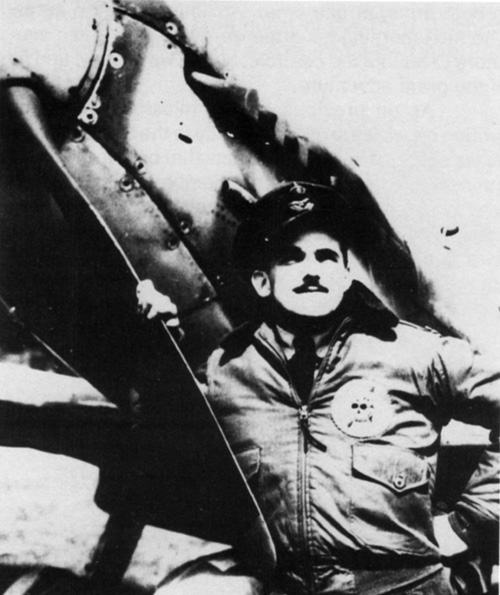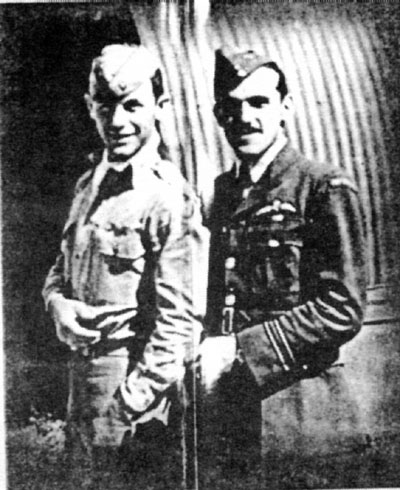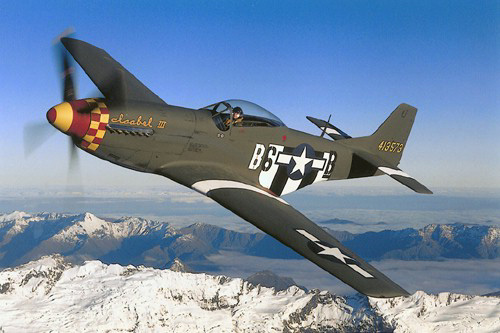
Royal New Zealand Exchange Pilot Jack Cleland with the 363rd FS, 357th FG

Jack Cleland joined the RNZAF in March 1941 and obtained his flying badge after flying Tiger Moths and Vincents from Harewood and Wood-Bourne, in July 1941 and by mid August was qualified as a service pilot – four months from ad initio training to completion of initial training. Posted to the United Kingdom in August 1941, he joined No. 616 Squadron RAF flying Spitfire VI’s in June 1942 after being commissioned following a period of advanced training and conversion flying on Miles Masters and Hurricanes.
After nine months with 616 Squadron on channel patrols and forays on escort missions into France, he spent two months in North Africa, a period for which no flying was recorded in his logbook. Returning from Africa by troop ship he met his future wife Isobel, a member of an ENZA group, in Gibraltar. Back in the UK he attended a fighter reconnaissance course at Hawarden in October 1943.
Returning to 616 in December, Jack Cleland was promoted to Flight Lieutenant in March 1944. His experience came to the fore on 12 June 1944 when he attacked two Focke Wulf 190s in his Spitfire VII near Laval, a French airfield being used by the Luftwaffe. His logbook entry reads Destroyed 2 FW 190s. Hit by flak in wing, hood and engine. Baled out 12 miles S/W of Portland Bill. Picked up by A.S.R. launch 15 minutes later.
On the 5th July the New Zealander was attached to a USAAF fighter unit, made his first flight in a 363rd Squadron USAAF Mustang out of Leiston on the 15th and was issued with his “personal” P-51D B6-V on the 21st. In honour to Isabel the aircraft was named Isabel III with two crosses below the cockpit – a reminder of his earlier successes. P-51D, 44-13573, Isabel III, code letters B6-V (also said to be in B). After a few days escorting B-17s over Germany, he flew an escort mission on 6th August to Danzig before landing at Prryatin in Russia after six hours 45 minutes in the air. On the following day he escorted B-17s from Russia to south east Poland before returning to Prryation, logging six hours 35 minutes. On the 8th he escorted B-17s from Russia to Ploesti in Rumania before landing at San Severo in Italy after nearly six hours aloft. Two days later he shepherded six Dakotas for five and half hours time to Yugoslavia and return, a flight he noted in his log book as most interesting.
On the 12th August the American fighters escorted more B-17s from Italy to south west France before the Mustangs returned to Leiston after seven and a half hours airborne for the day. The “Russian Shuttle” was complete; six very different days in the life of a New Zealand fighter pilot. A short period of some three weeks followed until early September 1944 on escorts into Germany and sweeps into occupied France strafing trains, trucks, and cars. His last mission with the USAAF unit was a sweep escorting Fortresses to Stuttgart on 5 September.
During Jack’s period of flying with the Americans he also met another pilot who was to become the most famous test pilot in the world – Chuck Yeager. Yeager was also attached to the 363rd and the two of them shard missions together.

Chuck Yeager and Jack Cleland
After a short time back with No. 616, his next posting was an instructional one to No. 53 OTU at Kirton in Lindsey in October 1944, lasting until mid 1945. He returned to New Zealand in October 1945 with 250 operational hours logged of 950 hours.
Jack Cleland returned to his pre-war position with MGM, becoming NZ General Manager before leaving in 1953 to set up a Wellington transport company with his wife, today still a family business as Jets Transport. Jack Cleland died in February 1970. The only kiwi fighter pilot to have flown with the Americans in WWII.

Restored Mustang in Jack Cleland’s markings. Photo courtesy of John Dibbs.

